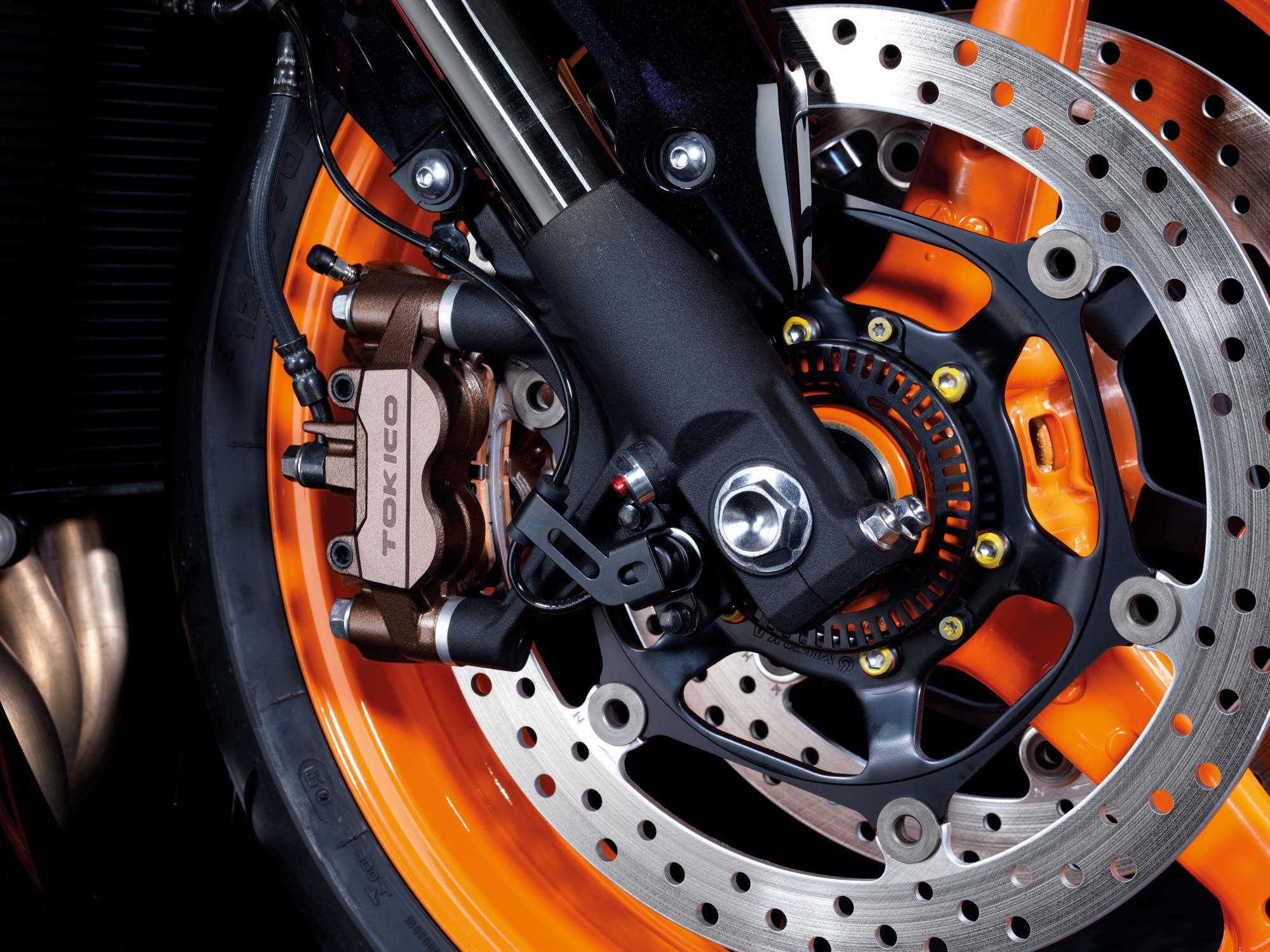Almost all the people who ride motorcycles would have heard the term 'ABS'.If you ask them they will tell that it stands for Anti-lock breaking system but only a few of them know what the system actually does.
 Anti-lock braking system (ABS) is an automobile safety system that allows the wheels on a motor vehicle to maintain tractive contact with the road surface according to driver inputs while braking
preventing the wheels from locking up (ceasing rotation) and avoiding
uncontrolled skidding. It is an automated system that uses the
principles of threshold braking and cadence braking
which were practiced by skillful drivers with previous generation
braking systems. It does this at a much faster rate and with better
control than a driver could manage.
Anti-lock braking system (ABS) is an automobile safety system that allows the wheels on a motor vehicle to maintain tractive contact with the road surface according to driver inputs while braking
preventing the wheels from locking up (ceasing rotation) and avoiding
uncontrolled skidding. It is an automated system that uses the
principles of threshold braking and cadence braking
which were practiced by skillful drivers with previous generation
braking systems. It does this at a much faster rate and with better
control than a driver could manage.
ABS generally offers improved vehicle control and decreases stopping distances on dry and slippery surfaces for many drivers; however, on loose surfaces like gravel or snow-covered pavement, ABS can significantly increase braking distance, although still improving vehicle control
There are four main components of ABS: speed sensors, valves, a pump, and a controller.
Speed sensors
 Anti-lock braking system (ABS) is an automobile safety system that allows the wheels on a motor vehicle to maintain tractive contact with the road surface according to driver inputs while braking
preventing the wheels from locking up (ceasing rotation) and avoiding
uncontrolled skidding. It is an automated system that uses the
principles of threshold braking and cadence braking
which were practiced by skillful drivers with previous generation
braking systems. It does this at a much faster rate and with better
control than a driver could manage.
Anti-lock braking system (ABS) is an automobile safety system that allows the wheels on a motor vehicle to maintain tractive contact with the road surface according to driver inputs while braking
preventing the wheels from locking up (ceasing rotation) and avoiding
uncontrolled skidding. It is an automated system that uses the
principles of threshold braking and cadence braking
which were practiced by skillful drivers with previous generation
braking systems. It does this at a much faster rate and with better
control than a driver could manage.ABS generally offers improved vehicle control and decreases stopping distances on dry and slippery surfaces for many drivers; however, on loose surfaces like gravel or snow-covered pavement, ABS can significantly increase braking distance, although still improving vehicle control
There are four main components of ABS: speed sensors, valves, a pump, and a controller.
Speed sensors
- The anti-lock braking system needs some way of knowing when a wheel is about to lock up. The speed sensors, which are located at each wheel, or in some cases in the differential, provide this information.
- Valves
 There is a valve in the brake line of each brake controlled by the ABS. On some systems, the valve has three positions:
There is a valve in the brake line of each brake controlled by the ABS. On some systems, the valve has three positions:
- In position one, the valve is open; pressure from the master cylinder is passed right through to the brake.
- In position two, the valve blocks the line, isolating that brake from the master cylinder. This prevents the pressure from rising further should the driver push the brake pedal harder.
- In position three, the valve releases some of the pressure from the brake.
- Pump
- Since the valve is able to release pressure from the brakes, there has to be some way to put that pressure back. That is what the pump does; when a valve reduces the pressure in a line, the pump is there to get the pressure back up.
- Controller
- The controller is an ECU type unit in the car which receives information from each individual wheel speed sensor, in turn if a wheel loses traction the signal is sent to the controller, the controller will then limit the brakeforce (EBD) and activate the ABS modulator which actuates the braking valves on and off.
No comments:
Post a Comment